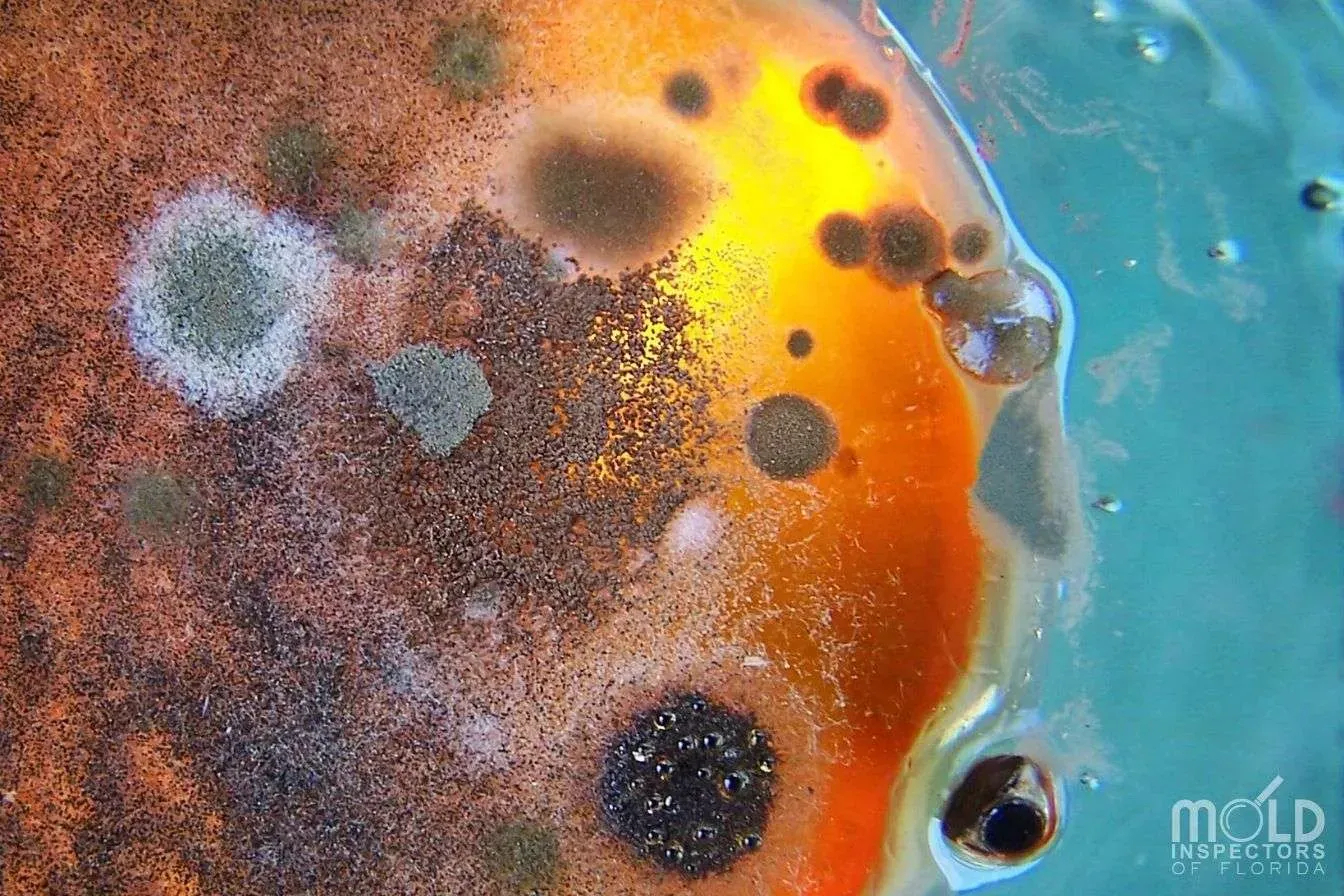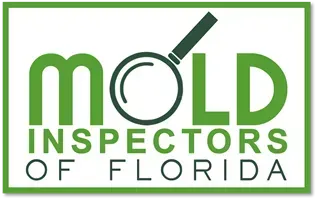The Rainbow Colors Of Mold

The Many Colors Of Mold
When we hear the word mold, most of us picture green fuzz on spoiled food or black and green spots on the wall. Yet, there are thousands of species of molds, and each type of mold can vary in color. The different colors of mold have a tale to tell! While black and green may be the most seen molds, mold can also grow in a vast array of colors.
In this article, we’ll explore the many colors of mold, where they like to live and some potential hazards.
What causes mold to have different colors?
There have been theories of why different molds differ in color. Yet, science has provided us with some insight on why and some may even consider it fascinating. Mold colors may vary due to their age or stage and the conditions in which they are growing. Also, the colors of mold vary by region. For example, in The Amazon, orange mold is very common due to the pigments found in its food source.
Fungal biologists have found that the colors of mold act as a weapon or a defense mechanism. The color pigmentation creates a protective barrier for the mold. They even create a toxic chemical environment as an act of warfare against other fungi! Another function of color produces waste chemicals or digestive agents. The digestive agents break mold’s food source down.
Multi-Colored Mold
In the mold photo featured above, it’s easy to see there is more than only one color of mold represented. This is often the case when mold is present. Most mold reflects several colors that range from white to dark and even bright colors. Important to note, the same type of mold can, in fact, appear in several different colors. This presents a challenge in determining what type of mold you’ve found by sight alone. For this reason, a Certified Mold Inspection is always recommended.
White Mold – A color of mold often confused with mildew!
White mold is often confused with mildew. This develops due to their microscopic spores, making them complicated to detect. Once the colonies grow, the molds appear as spots across the surface of the affected area. Like most other molds, white molds thrive in wet and musty environments. White mold can grow on any organic materials such as plants, fabrics, wood, or drywall. This can prove to be a danger to your health and the structural safety of your house.
It appears as powdery, flaky, stringy, or film-like in appearance. In the early stages, it can resemble mildew. Mildew is harmless. Yet white mold can grow deep within the organic materials. When this happens, the mold compromises the material’s structural integrity. White mold can also turn from white to grey, green, or black!
Gray Mold – A color of mold more dangerous to plants than people.
Gray mold is a danger to plants. It is a necrotrophic fungus that kills its host and lives off of the dead tissue. Sounds like something off of a horror movie, right? At first, gray mold will cover only parts of the plant that is its host with grayish webbing. But, eventually, the entire plant becomes covered by this gray fuzzy growth.
Though this is deadly to plants, the risks to humans are minimal. Some have reported an allergic reaction to this species of mold. This reaction is also known as “Winegrowers Lung”. This hypersensitivity pneumonitis isn’t deadly but requires medical treatment.
Red Mold – This color signals danger.
Red mold is easy to spot and may signal danger. Some people mistake red mold as a pink mold and vice versa. There are many types of mold associated with this color, some hazardous. Only a certified mold test will be able to determine if a red mold is hazardous or not.
This color mold tends to grow alongside other molds. It’s often found on spoiled food and building materials such as wood and drywall.
Green Mold – A very common color of mold.
Green mold is among the most common species of mold and refers to hundreds of mold types. Green mold spores can, on occasion, turn blue, black, or pink. Most often, when found in a home, the spores you will discover are green in color. If you find green mold in a home, investigate areas that are moist, warm, and have organic material. Windowsills, attics, and bathrooms are especially prone to these types of mold.
Green-Black Mold – A toxic color combination.
Green-Black mold is a camouflaged version of toxic black mold, Stachybotrys. Black mold is not identifiable by sight. Like black mold, green-black mold requires a certified mold test to identify its type. This type of mold is one of the most dangerous molds that we find. It poses a hazard to your health and any living thing it reaches due to its deadly mycotoxins.
This mold is often gelatinous and slimy due to its top layer of protection. But, if this mold’s source of moisture ends it will turn to a dry and powdery texture. Whether the mold is slimy or powdery, the health risks remain the same and you should avoid it at all costs.
Olive Green Mold – A common mold that’s difficult to see!
Olive Green mold is very common in both indoor and outdoor spaces. Yet, this color mold is very difficult to see. This mold loves outdoor plants as hosts. Usually, this mold is powdery. It will form a combination of colors with gray and brown parts to it. It may be very light in color, making it hard to spot with the naked eye.
In rare cases, olive green mold can cause a brain infection called fungal meningitis. It’s linked to various eye, skin and sinus infections. This type of mold is hazardous to your health.
It loves outdoor plants as hosts. It’s often found growing in walls, cabinets and damp carpets. You may even find this mold growing on the leave of your indoor houseplants.
Orange Mold – A mold color often mistaken as rust!
Orange mold is more common than you may think. Some homeowners have orange mold present and do not realize what it is! Many mistake it for grime or rust-like build up. Orange mold differs from typical mold with its orange color and slim like appearance.
In typical mold-like fashion, orange mold grows in moist, warm places that offer a food source. But, orange mold is most likely to develop on wood rather than any other organic material. Beams, attics, rafters, and wooden window sills are among the top affected areas of orange mold. Kitchen floors and ceilings are also a high-risk area for this mold growth. Pipes and appliances expose wooden areas of kitchens to moisture making them prone to mold.
Yellow Mold – A mold color often confused with pollen.
Yellow mold often gets confused with pollen. Here is why. Both are yellow and may collect near windows or doors. Especially if flowers or other pollinating plants are nearby. It appears as dusty or fuzzy, and in some cases, may arise as a slimy gelatinous texture. This color mold often presents itself along with the white or green mold.
Slimy, yellow mold can be one of over 900 species of molds that are unlike fungi. They are single-celled organisms. Due to the single-cell structure, the slime molds are liquid or mushy in texture. Slime molds tend to feed off of plant matter in the decomposition phase found outdoors. Including in your mulch bed or leaf piles. The most common area for a yellow slime mold to be present is within the air conditioning unit.
Purple Mold – A mold color that is easy to spot!
Purple mold is uncommon in comparison to the other colors of mold. Yet, this color of mold is often found on wooden surfaces such as building material. It loves to hide behind walls, wallpaper and beneath vinyl.
This color is often dangerous as it’s usually associated with the toxic pink mold. Toxic pink mold, Fusarium, produces mycotoxins that are harmful to your health.
Blue Mold – We’re not talking cheese.
This powdery mold is usually a form of mold called aspergillus or penicillium. Some blue molds are in cheeses that we eat or used to make antibiotics. Blue mold outside of these specific types are not good for your health. The antibiotic penicillin comes from the mold called penicillium. But, breathing penicillium spores comes with risks to your health. This type of mold can cause allergic reactions, inflamed lungs, and sinus issues. This type of mold loves to grow on food but is also found in places where water damage has occurred.
Pink Mold – Don’t let this pretty color fool you.
Pink mold is usually fuzzy and produces dangerous mycotoxins. Mycotoxins are the toxic compounds that are naturally produced by certain molds. These molds are a health risk to those with weakened immune systems, the elderly and children. The risk of health issues increases as exposure time increases to these molds.
For example, running a humidifier for long periods of time can cause a pink mold to grow in the machine. If this happens, people may develop a hypersensitivity pneumonitis called “Humidifier Lung.” Humidifier Lung causes coughing, difficulty breathing and fever. Cases of “Humidifier Lung”. This type of mold is also often found growing on damp window frames, wallpaper, and carpets.
Brown Mold – A color of mold often mistaken as a simple discoloration!
Depending on the lighting and stage of development, brown mold may appear to be brown or almost black. Brown mold in early stages may seem like small areas of discoloration. People mistake mold as discoloration on walls, ceilings, bathroom tiles, or wood surfaces. At first glance, it may seem harmless to the unsuspecting homeowner.
Upon aging, the brown mold develops a thick fuzzy, or hairy appearance. If not caught in time, it can morph into mushroom-like blobs on the surface it has infested.
Brown mold can be confusing to the homeowner with a mixed appearance. This is due to the diverse strains of mold that are common for brown molds. Patches of brown molds often contain a combination of other molds. And some that produce mycotoxins that are hazardous to your health.
Black Mold – A color of mold most often associated with toxic health risks!
Black mold is the most feared of all mold colors. This is because black mold is toxic to your health in most cases. Yet, not every black mold is toxic and there are molds of other colors that happen to be toxic as well. Believe it or not, you cannot determine if mold is black by looking at it. Other colors of mold can also appear black. A specialized microscope used in a mold analysis is the only way to determine if the mold is black.
If you find what you believe to be black mold and it has a slimy appearance, chances are it’s toxic to your health. It grows easily in cellulose materials like cardboard, paper, wicker, and wood. It’s often found in humid parts of the home like the kitchen, bathroom, laundry room, and basement. Additionally, black mold is very difficult to completely remove. Many people look for ways to take care of household tasks and challenges through DIY methods. We recommend seeking certified mold remediators to tackle this type of job.
Comprehensive Mold Inspection
As you can see, it’s not easy to determine if the mold you are dealing with is toxic or not. You may not even be able to tell if you have mold growing by sight alone. If you notice any of the molds listed above or suspect you may have mold, call us at Mold Inspectors Of Florida. Our comprehensive mold inspection reports are available within 72 hours of the assessment. If you need a quicker turn around time, 24-hour results are available for an additional fee.
We provide you with a detailed report that includes photographs of the affected area. Our reports are easy to understand and explain where and why mold is present.
It’s our pleasure to provide our clients in Fort Myers with a certified mold inspection. We serve all cities within Lee and Collier County Florida. Our inspection, your peace.


